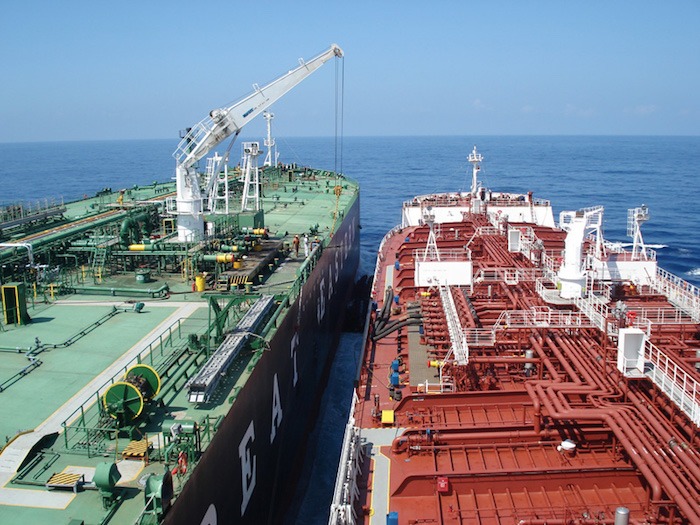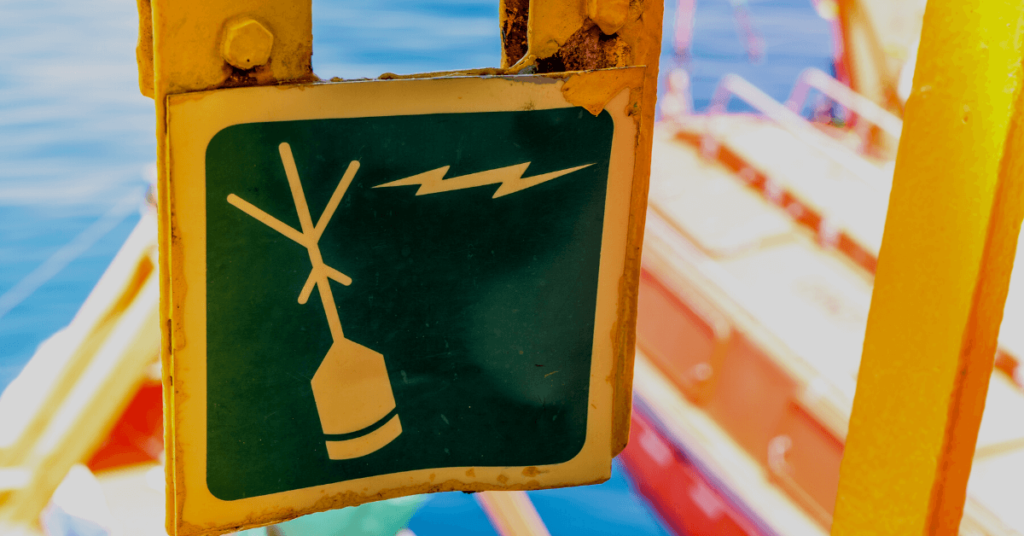8 Points Tanker Ship Chief Officer Must Consider While Dealing with Port Terminal Representatives
Most of the times vessels call ports which are quite diverse in respect to their nationality and language. Undoubtedly, the deck officers are not always familiar with the ports they call or the culture of the place.
A healthy relationship between deck officer and port terminal representatives is the key to “hassle-free” cargo operations. Ship personnel must understand its importance in shipping procedures and take all necessary steps to ensure a good relationship with port personnel.
Chief Officer must keep a note of the following points in order to ensure a healthy relationship with shore people

1. Guide to Port Entry – Guide to Port Entry is a publication on board which provides details of various ports around the globe, including diverse information about the Geo – physical and commercial requirements of the Port. A chief officer must go through this guide properly before entering the port. However, a good and strong professional relationship between the ship’s personnel especially Master and the Chief Officer with the terminal representatives is extremely beneficial.
2. Ship – shore meetings- Ship – shore meetings play a vital role in making the following operation successful and efficient. Their importance should never be neglected as they are legally binding and thus any misinterpretations or confusions later can lead to huge commercial losses on either side. Chief officer must take these meetings very seriously.
3. Communication Channels – It is of utmost importance to ascertain for a chief mate about the means of communication, both primary and emergency, between the ship and the shore. E.g. some terminals use VHFs whereas some provide shore radios.
4. Emergency Stop Signal – Stress should be placed on the emergency stop signal between the ship and shore; and before commencing the operation it is always advisable to confirm the same with the shore. Procedure for “Emergency Stop” should be thoroughly explained to both the parties.
5. Know the grades and quantity of cargo – A chief mate should always know the grades and quantity of the cargo available with the shore, along with the number of shore tanks and quantity from each tank along with its temperature and density. Density can be in ‘Air’ or ‘Vacuum’.
Recent addition to SOLAS states specifically that while loading or unloading the receiver must be provided with a copy of MSDS. Without an appropriate copy of MSDS the receiver can refuse to accept the cargo.

7. Discuss shore tanks capacity – Shore tanks have limited capacities and hence there may be changeover of shore tanks too. This needs to be discussed as some terminals in US and Europe have long stoppages during cargo transfer. An estimate of this enables the vessel to optimize use of fuel to produce inert gas and keep her tanks inert during entire the operation.
Real life incident
A vessel was unloading jet fuel in Baltimore in the month of July. Due to shore delay, changing over of shore tanks took approximately 22 hour, during which vessel kept running her IG generators and Turbines .Had the terminal notified promptly, the vessel could have saved as much as 8 tons of diesel oil. Though there were no claims from charterers but these saving counts substantially in today’s competitive market.
8. Fix the rate/ pressure of cargo transfer – The rate or pressure of cargo transfer is an essential ingredient of ship – shore safety meeting. The agreed rate or pressure, both maximum and minimum is to be agreed upon and never to be exceeded by both ship as well as shore. Most terminals have flow meters/pressure gauges which determine instantaneous rates and almost all loadicator programs (a program used to calculate various stability parameters of ship) installed onboard tankers nowadays can calculate instantaneous rate/pressure as well.
Read life incidences
While loading Heavy Fuel Oil at Vopak Terminal, Singapore a vessel accidentally closed her tank valves. The terminal was loading the vessel using a booster pump which tripped due to an excessive back pressure of 5 kg. The maximum back pressure shore pump could withstand was 3.0 kg, same was mentioned in the ship/shore agreement too. The pump tripped and some parts were damaged. The delay to repair and reset the pump was claimed from the vessel, a fine was imposed too for not following ship/shore agreement and vessel was blacklisted.
Also, Reliance terminal in Sikka, Gujarat, India is provided with auto closing valves if the back pressure exceeds a set limit. To resume the operation the valve has to be resettled. This leads to delays on vessel’s behalf and can cost dearly to owners and charterers as well.
Most of the terminal representatives are experienced professionals. However keeping a courteous and honest professional approach towards them is an added advantage for the ship staff when their co operation is much required.
More Important Points to Consider
OBQ (On-board quantity) Surveys are carried out before a vessel is reported ready to load cargo. The surveyor has to determine that Cargo tanks are dry and clean and then issue a NIL ROB (Remaining on board certificate along with a Dry tank certificate. While carrying out the survey all cargo line valves should be in open position.
The DRY tank and NIL ROB certificate are very important to obtain for a vessel from commercial aspect. If not found dry then the chief mate should be aware of appropriate documentation or remarks.
E.g. Most of the surveyors in USA, UK and European ports refuse to sign a Clean Tank Certificate. They rather prefer to sign a Dry Tank Certificate.
Means to establish a dry tank include use of a dipping rod for checking any sediment at the bottom. Theoretically a tank should be dipped at three locations. If any residues are found, whether liquid or non liquid, the amount of liquid residues can be established using the wedge formula calculation. The temperature of residue too must be measured. Ship’s trim and list should be ascertained while making these calculations.
A mate should never try to minimize ROB during survey as it will consequently increase the Cargo quantity after loading. This may lead to a “Shortage of Cargo “claim at discharge port. Chief Officer should always observe the procedure for measuring ROB by the surveyor. The same can be logged down if necessary by the ship’s staff.
In case of discrepancies between ship’s figure and shore figure despite following all prescribed procedures, the vessel should initiate owners and charterers recommended measures to indemnify them against any unwanted claims.
Do you have info to share with us ? Suggest a correction
Latest Ship Safety Articles You Would Like:

About Author
Abhishek Bhanawat is a chief officer who has worked on various types of tankers. He specializes in Crude Oil and Product Tankers. He is highly passionate about his work and loves to sail.
Subscribe To Our Newsletters
By subscribing, you agree to our Privacy Policy and may receive occasional deal communications; you can unsubscribe anytime.






















what is the purpose of bonding wires, though the pipe has electrical continuity.
@ Roshan: Bonding wires are important when two separate pipes are joined with flanged connection. Such connection may not have electrical continuity due to use of gasket (non conductive material) in between them.
Anyone may please tell me the reason oh having one anchor in even number and one in odd number???
appreciated your reply in advance..
Regars
Amit Kumar
It is common thing in shipping, left(port) side things (menholes, covers etc) numbered with odd numbers and right (starboard) side numbered with even numbers. That is why some ship also same procedure with anchor chain numbering.
no offence, but what’s the purpose of this article? Couldn’t find anything new mate. Or really helpful.
And I believe in 2nd last paragraph the term ROB was mistakenly used for OBQ. Is it?
Anyway I hope it must be good for new comers in the field.
i agree zahid, it must be obq (prior loading) while rob after discharging.. this is really good for newcomer. i suggest to read the ship shore safety checklist as well…have a safe operations guys!
Hi Amit
You had asked about the reason for different number of shackles on port and stbd side.
The reason is as follows
In chain certificate there is some thing called as equipment number.
So as per the equipment number, for example if the number is say 21 then she will have 11 and 10 shackles.
Now don’t bother about from where and how this equipment number comes. Leave that for naval architects .